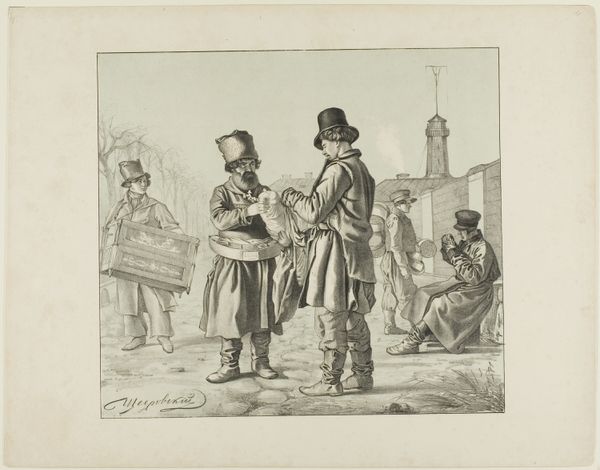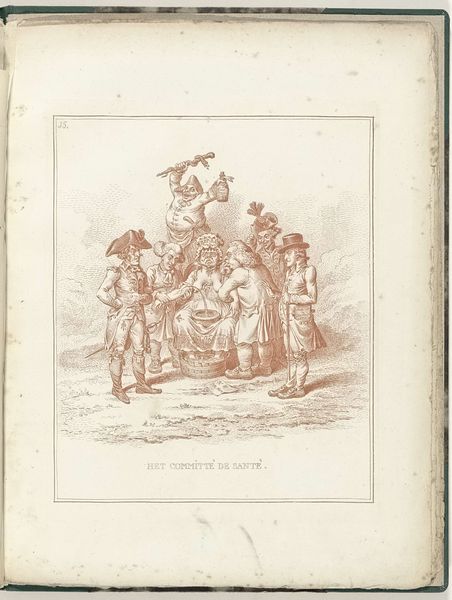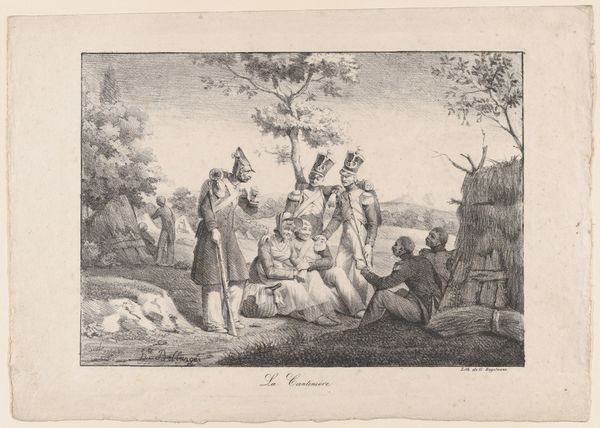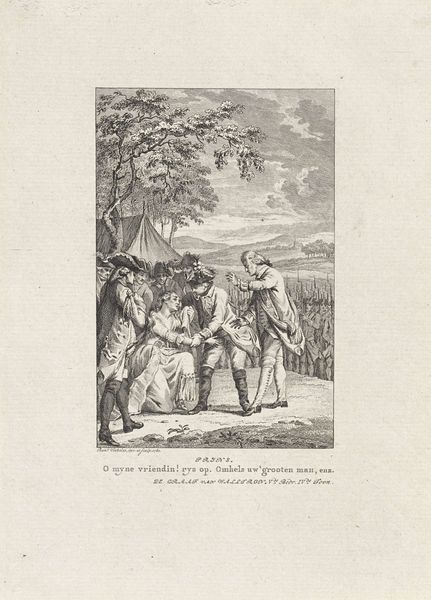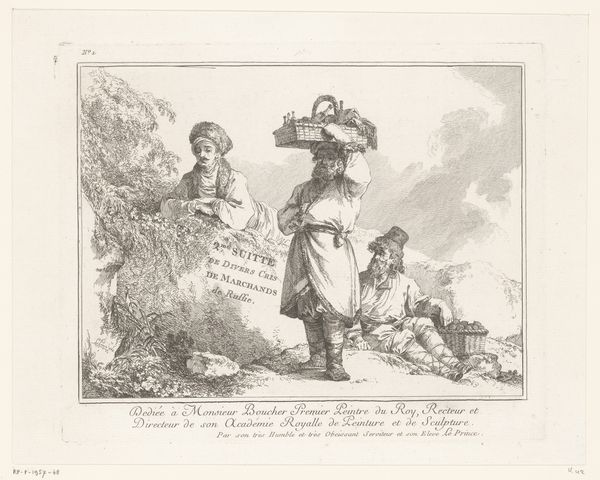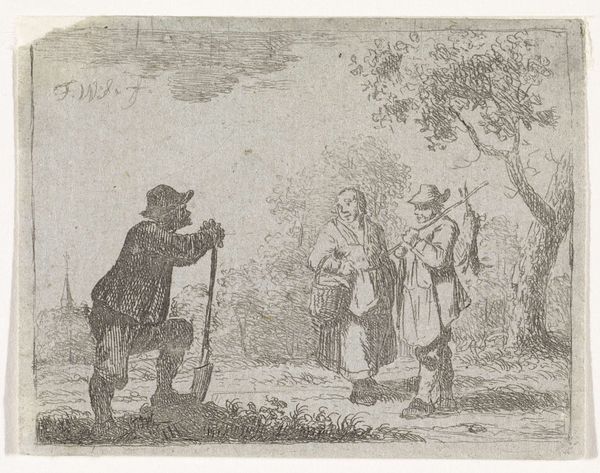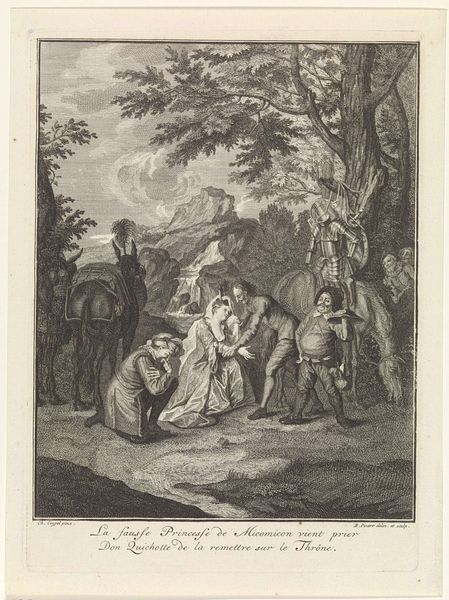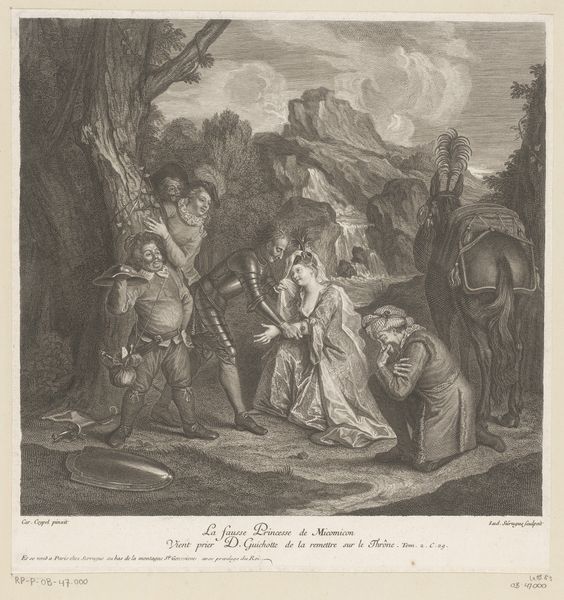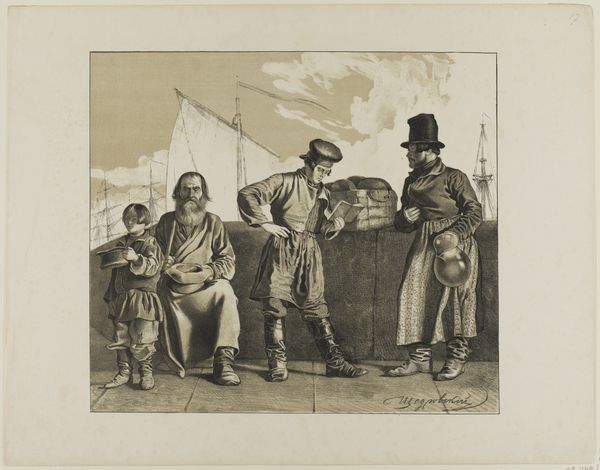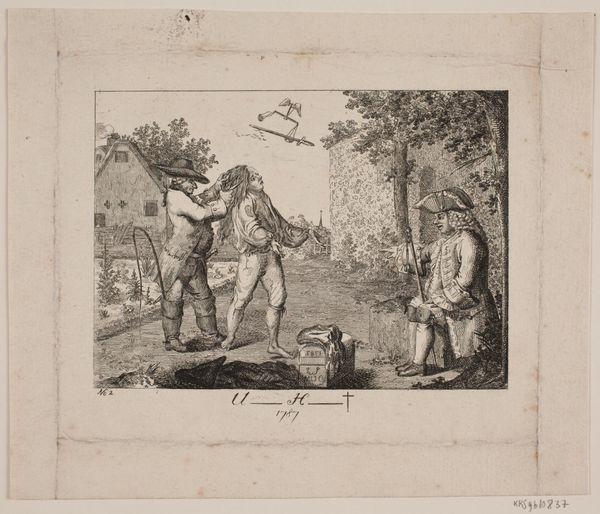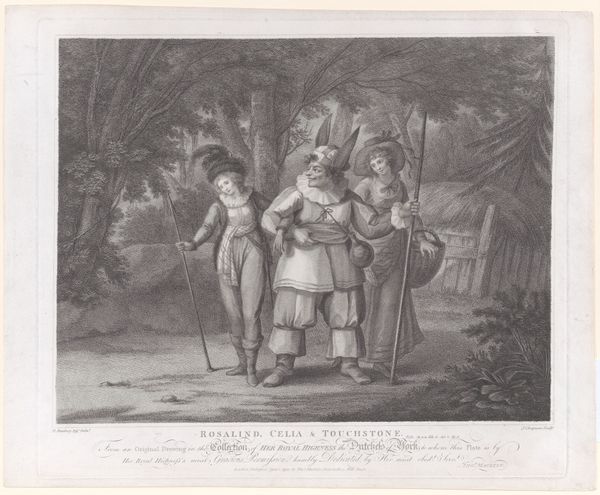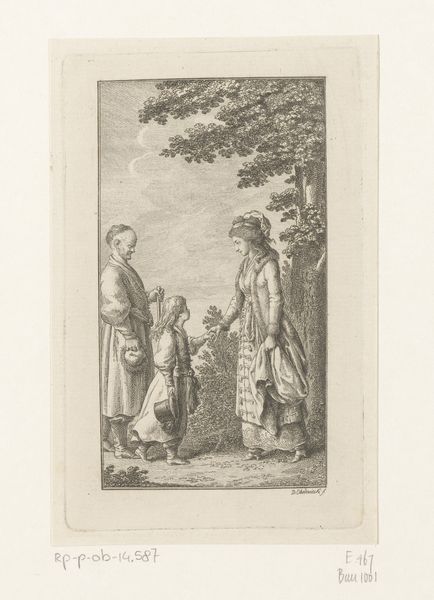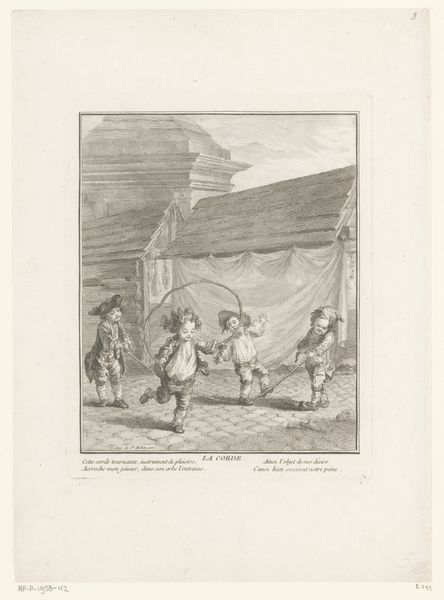
drawing, print, etching, paper
#
drawing
#
16_19th-century
#
germany
# print
#
etching
#
landscape
#
paper
#
romanticism
#
genre-painting
#
history-painting
Dimensions: 248 × 307 mm (plate); 278 × 338 mm (sheet)
Copyright: Public Domain
Editor: So, we're looking at Johann Adam Klein's etching, "The Artists on Their Journey," from 1819. It depicts a group of artists sketching outdoors, rendered in incredible detail with delicate lines. It's almost… intimate. What strikes you about this piece? Curator: The production of this print is remarkable. Consider the paper, the ink, the etching process itself – labor intensive and requiring specific skills. This wasn't simply an image, but a manufactured object, available for purchase and distribution within a growing art market. Editor: That’s an interesting angle. So you're focusing on the… how it was made? Curator: Exactly. The print medium inherently democratized art, making it accessible to a broader audience than painting ever could. But consider *who* could access it? What materials were used? Were they readily available and what processes did they undergo? What socioeconomic structures facilitated the production and distribution of these artworks? Editor: That's true, it probably wasn't affordable for everyone. The way the artist rendered details seems to emphasize the clothing and tools as being high quality. Would you consider this art or craft or some blend of both, given the method of production and presumed commodification? Curator: Klein walks a fascinating line. While etching aligns with craft in its reproductive nature, the artistic skill and intent elevate it. But blurring that boundary is precisely the point! Examining the labor embedded in this work challenges traditional notions of artistic genius. Who actually gains or loses prestige from such categorization? Editor: I never thought about art this way! Focusing on materials and production really changes my perspective on art consumption and art's creation in history. Curator: Precisely! By studying the "means" of art we unveil so much about the socioeconomic relationships. The materials, labour and manufacture! That changes the viewer.
Comments
No comments
Be the first to comment and join the conversation on the ultimate creative platform.
